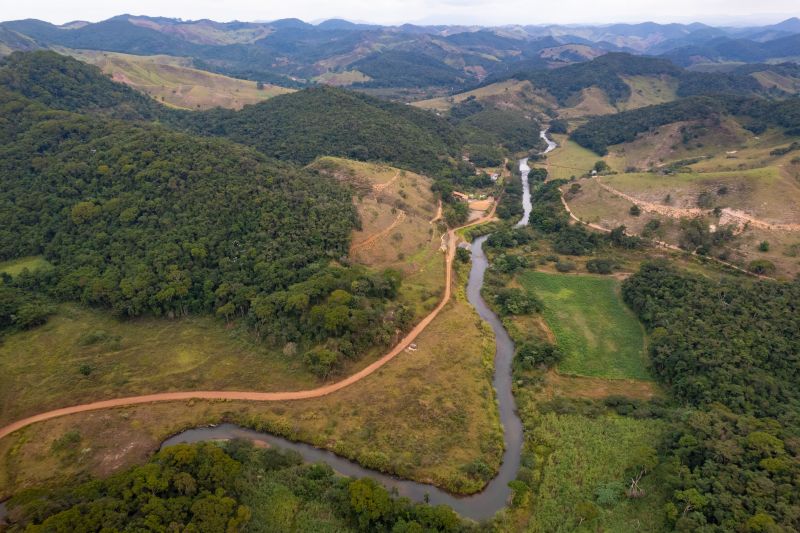In the wake of the Mariana dam disaster, a catastrophic event that left deep scars on both the environment and the communities it affected, the indispensable role of science and research has come to the forefront. The disaster, which unleashed a torrent of devastation, served not only as a somber reminder of the vulnerabilities inherent in our infrastructure but also as a catalyst for transformative scientific inquiry.
Researchers, environmentalists, and engineers quickly mobilized, seeking to understand the complex interactions between human activity and natural systems. Their findings have the potential to inform strategies for restoration, enhance resilience against future calamities, and revitalise the impacted ecosystems.
Yet, recovery transcends mere technical solutions; it demands a nuanced understanding of social dynamics and ecological balance. As we delve deeper into the ongoing recovery efforts, it becomes clear that science is not just a tool—it is a guiding compass through the labyrinthine path to rebuilding devastated landscapes and lives.
The Importance of Scientific Inquiry in Disaster Recovery

Scientific inquiry plays a pivotal role in the recovery from disasters like the Mariana dam failure, serving as both a guide and a foundation for informed decision-making. Through rigorous research and analysis, scientists unveil the myriad factors that contributed to the disaster, illuminating pathways for effective remediation and rebuilding.
The process involves not just data collection, but also engaging with communities to understand their unique challenges and needs post-disaster. By employing interdisciplinary approaches, researchers can assess environmental impacts, public health risks, and socio-economic repercussions, creating a holistic view of the situation.
In essence, scientific inquiry transforms chaos into clarity, enabling stakeholders to devise strategies that are not only effective but sustainable in the long run. Ultimately, it fosters a resilient framework for recovery—one that prioritizes safety, equity, and ecological balance.
Assessing Environmental Impact Post-Disaster

Assessing environmental impact post-disaster is a complex, multifaceted endeavor that requires a blend of both immediate and long-term evaluation strategies. Following the catastrophic failure of the Mariana Dam, researchers mobilized swiftly to collect data on the spills repercussions, focusing on water quality, sediment composition, and the health of affected ecosystems. Sampling efforts extended beyond the riverbanks, uncovering the ripple effects on biodiversity—some species thrived, while others faced imminent extinction.
In this intricate tapestry of recovery, the interplay between scientific findings and environmental policy became apparent: clean-up efforts had to be balanced with the preservation of remaining habitats, necessitating innovative approaches that combined traditional ecological wisdom with cutting-edge technology. As assessments unfolded, it was clear that understanding the damage was just the beginning; the path toward restoration would be as unpredictable as the disaster itself, leading to both advances in ecological science and unforeseen challenges in community recovery.
Innovative Research Methods for Recovery

In the aftermath of the Mariana Dam disaster, innovative research methods have emerged as pivotal tools for understanding its complex ramifications and facilitating recovery. Leveraging cutting-edge technologies like remote sensing and artificial intelligence, researchers can analyze environmental changes with remarkable precision, identifying areas most affected by pollution and habitat destruction. Meanwhile, participatory approaches, engaging local communities in data collection and decision-making, not only enrich the research process but also empower those directly impacted by the disaster.
For instance, employing citizen science initiatives fosters a deeper connection between residents and scientists, encouraging collaborative monitoring of water quality and biodiversity. Additionally, interdisciplinary studies that meld ecological, social, and economic perspectives have proved essential in crafting holistic recovery strategies that respect both environmental integrity and community resilience.
As researchers navigate this multifaceted landscape, their ability to intertwine technology with community engagement will be crucial in rebuilding lives and restoring ecosystems devastated by the dams failure.
Conclusion
In conclusion, the recovery from the Mariana dam disaster has underscored the indispensable role of science and research in understanding ecological impacts, informing policy decisions, and guiding community rehabilitation efforts. The integration of scientific knowledge into recovery strategies not only aids in addressing the immediate consequences of such tragedies but also fosters resilience against future incidents.
The resettlement of Bento Rodrigues resettlement exemplifies how targeted research can facilitate the reconstruction of communities, ensuring that the voices of affected populations are heard and their needs met. As we move forward, it is imperative that we continue to prioritize scientific inquiry and evidence-based practices in disaster recovery, paving the way for sustainable solutions that protect both human and environmental health.


